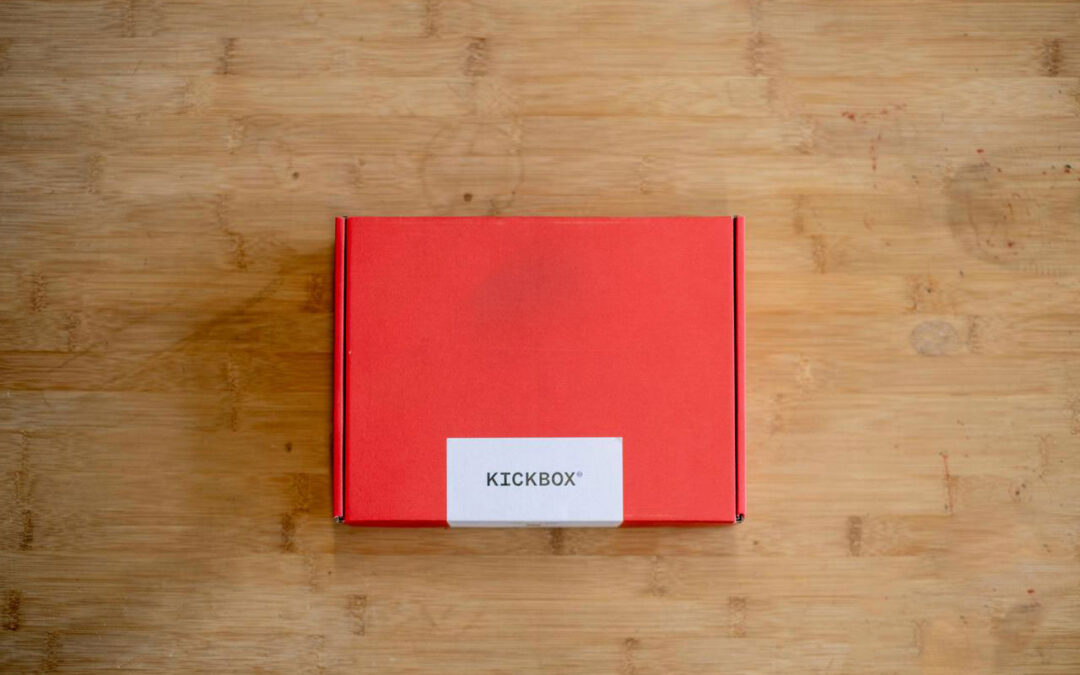“I would argue that it was an innovation success!”
At that moment, I started to deeply empathize with Alice because I felt like I was tumbling down the rabbit hole.
For the previous several minutes, I had been on one of my usual soapboxes – Innovation needs to generate quantifiable, and specifically financial, results; otherwise, it’s theater at best and performative lie at worst. As Alexander Osterwalder says, “ROI is the only thing that matters in innovation.”
That’s when my conversation partner brought up Kickbox.
Way back in 2012, Adobe’s Chief Strategist and VP of Creativity, Mark Randall, packed “everything an employee needs to generate, prototype, and test a new idea” into a little red box to encourage employees to unleash their inner innovator. One thousand Kickboxes were distributed to interested employees in that first year.
In the decade since, Kickbox has been used at thousands of organizations from multi-nationals (3M, Cisco, Caterpillar, MasterCard, Swisscom, P&G, Roche, Implenia, Zurich Insurance) to educational institutions (ETH, UNSW, USC), government agencies (DARPA, United Nations) and non-profits (Peace Corp, Gates Foundation, Kickstart-Innovation, Careum). It is widely regarded as the world’s most “successful” Intrapreneurship program.
But what does “successful” mean?
Widely adopted?
Highly regarded?
The source of:
- New projects (using Kickbox, Swisscom validated 400+ innovation projects in just two years)?
- New revenue?
- Cost savings?
- Higher profit?
Effective at:
- Increasing employee morale?
- Reducing employee turnover?
- Building a culture of innovation?
Something else?
For Kickbox, “success” means increasing employee engagement, creativity, and collaboration.
Let me be clear: this is an AWESOME outcome. Very few programs have even a temporary impact on employee engagement and the organization’s culture of innovation. So, to have a program that makes a measurable and lasting impact is incredible. To have a program that is so effective that other organizations around the world adopt it AND experience similar benefits is almost unbelievable,
But is that enough?
If Kickbox was the ONLY thing Adobe did to encourage innovation, would Kickbox be considered a success?
I don’t think so.
Kickbox was successful because it was part of a holistic approach to innovation. It was part of a portfolio of efforts to encourage employees to be more creative and collaborative and to build and acquire new sources of revenue.
If Kickbox was the only innovation effort Adobe invested in, it would not have lasted even the two years between its 2012 test and 2014 Adobe-wide launch. It would have been like all other hackathons, shark tanks, events, and gimmicks companies use to encourage innovation without thinking about how to carry on after the event.
Speaking of the two years from test to internal launch…
For Kickbox, “success” also means surviving internal scrutiny.
Each Kickbox contained instructions, a pen, two Post-It notepads, two notebooks, a Starbucks gift card, a bar of chocolate, and a $1,000 prepaid gift card that could be spent on anything the employee needed with NO need for approval, justification, or even an expense report.
Think about that for a moment.
The 1,000-box test cost $1M in gift cards PLUS the costs of all the other materials, and that’s before you factor in the costs of design, assembly, and distribution.
If Kickbox was a grassroots effort instead of one championed by the company’s Chief Strategist and VP of Creativity, a highly respected executive who joined Adobe when it acquired the company he led as CEO, would the company have spent $1M+ on the test and an additional two years refining the concept before launching to the rest of the organization?
I don’t think so.
Kickbox was successful because it survived financial scrutiny and organizational skepticism, protected by a senior executive motivated to deliver on a request to teach his skills and approach to innovation to the rest of a giant organization.
“Success” ultimately means money.
After a week of tumbling, I think that I may have reached the bottom of the rabbit hole and a way to reconcile my money-grubbing capitalist view of innovation with my colleague’s extremely true and data-based assertion that success can be something much softer and more intangible.
Yes, a successful innovation can be something with qualitative benefits, AND those benefits need to translate into quantifiable (financial) benefits, AND it needs a senior executive to shepherd it through the years of scrutiny and skepticism that kill most efforts.
After all, employee engagement, lower turnover, and more ideas have quantifiable and meaningful financial benefits. So, ultimately, it is all about the money.
Or maybe I’m still in Wonderland.
What do you think?

Thanks for taking us to the Looking Glass with this post dear Alice. 😉
I think your conversational partner is spot-on, and I’d reckon they must be a unique kind of strategy consultant.
Indeed, my conversation partner is definitely a unique kind of innovation and strategy consultant. He brings a different perspective to the conversation, kinda like the White Rabbit.
Thanks for chiming in Curtis, and for inspiring this post.
Random Fact – many literary critics consider Wonderland to be a portrayal of a perfectly logical and literal world. Lewis Carrol was, after all, a mathematician